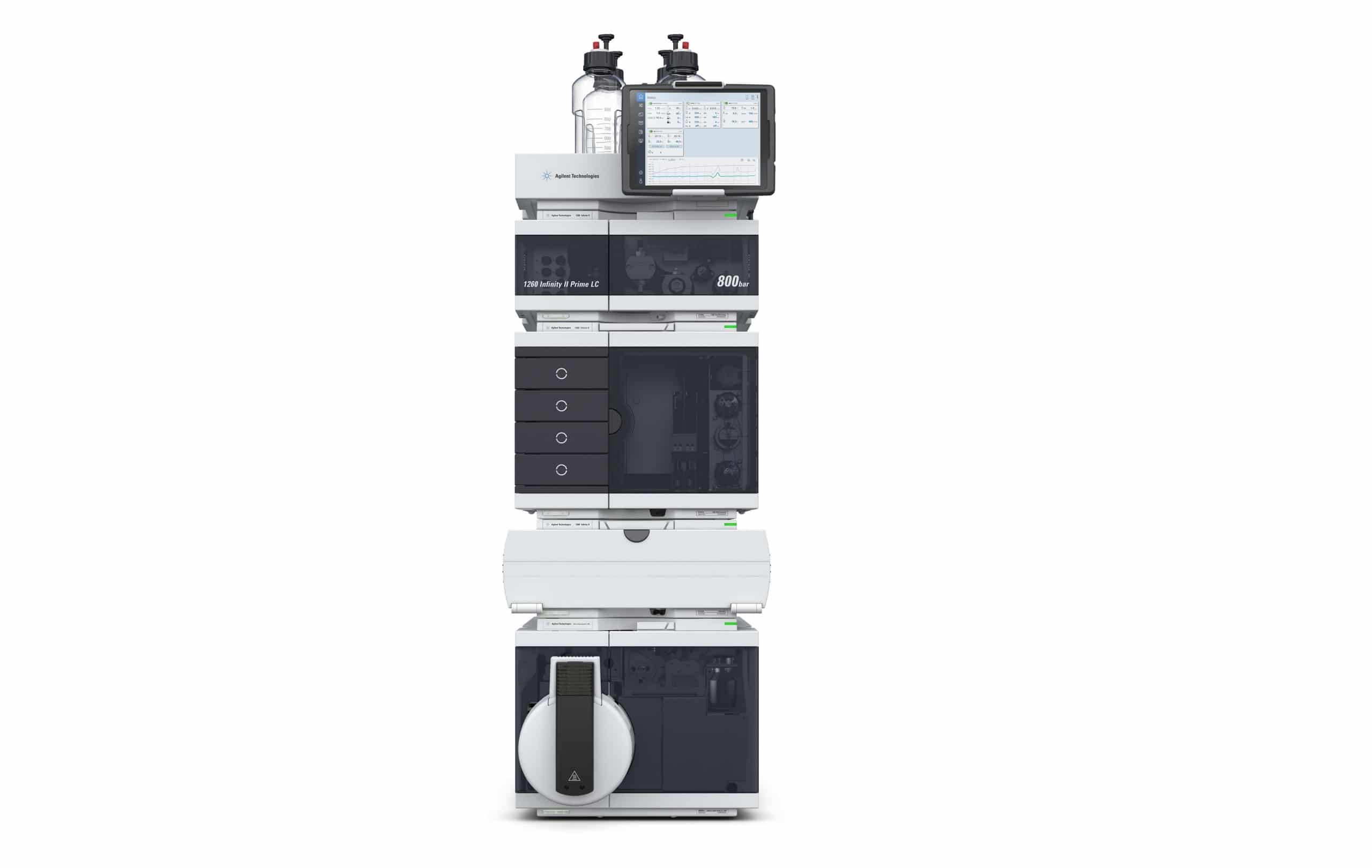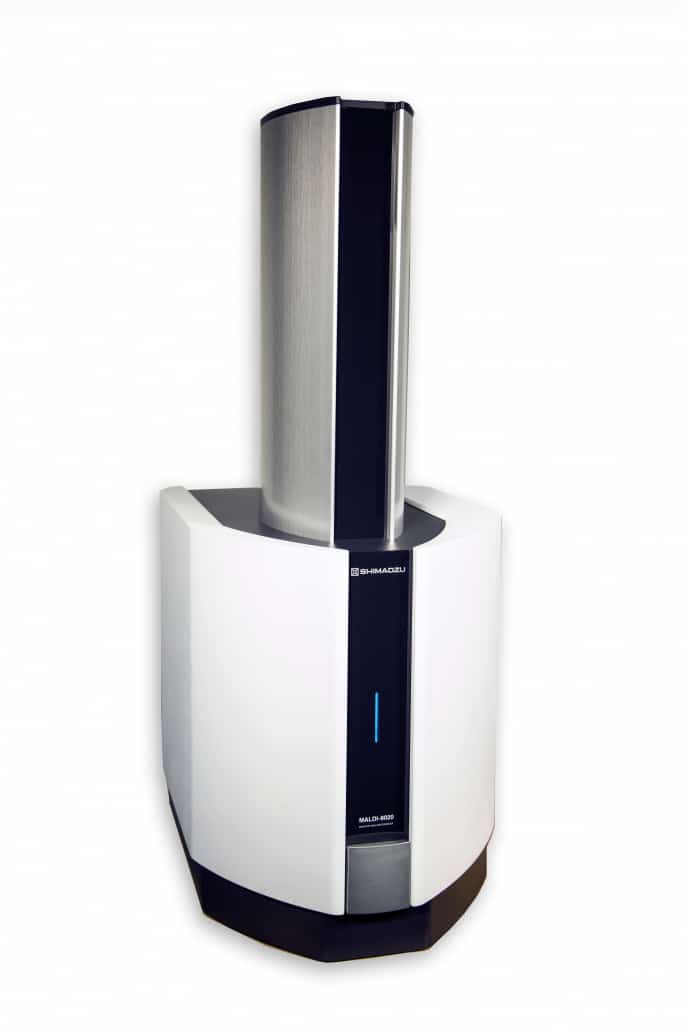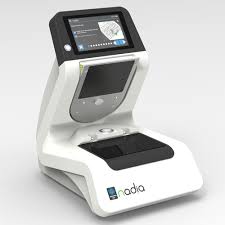The 2018 IBO Design Awards
Each year, in our August 15th issue, IBO recognizes outstanding industrial design of analytical instrumentation with the winners of the IBO Design Awards. Each Award winner stands out for how its industrial design not only creates a better looking instrument but is key to enhancing the user experience and instrument functionality. Criteria for the Awards include innovation, utility and approachability.
Simplicity is a theme of this year’s Awards as each winner integrates its key design features into a seemingly simple appearance, even though the instruments themselves reinvent the presentation of its technology to meet users’ needs in a new way. In doing so, the design is non-intrusive, harmonious with users’ needs and requirements, and highlights the system’s advantages and defining features.
Nominees are selected from instruments that IBO staff view at trade show, online and in print. To be eligible for a 2018 Award, the system must have begun commercial shipments between August 2017 and July 2018.
Gold Award
This year’s winner of the Gold Award, Agilent Technologies’ Ultivo triple quadrupole MS system, is a major leap forward in instrument size reduction and, consequently, utility. The instrument is 70% smaller in size compared to other triple quad MS systems. In fact, it does not even resemble an MS triple quadrupole system, making its visual appearance completely unique and benefiting users in many ways. And blending form and function, the system maintains the performance capabilities of a standard triple quadrupole MS system.

Agilent Technologies Ultivo MS as part of LC stack
The Ultivo measures 15.6 in (39.5 cm) x 34.6 in (88 cm) x 12.6 in (32 cm). It weighs 130 lbs (50 kg). The system was completely designed in house by Agilent.
As Shane Tichy, PhD, R&D manager at Agilent, told IBO, ”Ultivo was designed from the ground up to provide superior LC/MS triple quad performance in a significantly smaller size, so labs can improve productivity without requiring increased lab space,”. The dramatic reduction in size enables new options for triple quad users, such as placing a greater number of systems in one lab, thus running a greater number of samples each day, or integrating the system into a LC stack. ”It was designed to be harmonized with the look of the LC stack,” said Dr. Tichy. “So, as well as aesthetics, the instrument chassis had to be able to hold a certain amount of weight. The configuration was designed so that the entire LC stack could rest on top of the mass spectrometer.”
Accessibility for service is also a result of the industrial design. “There were functional design aspects as well,” stated Monty Benefiel, vice president and general manager of Agilent’s Mass Spectrometry Division. “Instruments stacked on top of the mass spec reduces the footprint, but we also needed to make sure that access was optimized for serviceability and maintenance,“ he explained. This design feature meets end-user needs. “You can service and maintain Ultivo without having to remove the LC from the top of the mass spec as everything is accessible from the side, the back or the front.”
To make Ultivo so compact, extensive engineering was required, and a new approach to the core technology. “We set out to make it relatively the same size as our multi-sampler module within the LC stack. We held our ground on that, and kept engineering until we got it to fit in that form factor,” said Dr. Shane. “The actual engineering was the greatest challenge because we were pushing new levels of performance in significantly smaller ion optics, thus causing us to rethink years of innovation in our current product line,” he noted. Mr. Benefiel told IBO, “Reducing the size by 70% while being able to deliver the same or better analytical performance was a challenge—it required innovation. The intellectual property that we were able to generate as a result of doing this is pretty significant.”
As Dr. Tichy explained, the innovations were extensive. “From a technical standpoint, customers told us that they needed to be able to perform more analyses, more efficiently, with less operator intervention at lower limits of quantitation,” he told IBO. “Some of the Ultivo innovations are the patented Cyclone Ion Guide that ensures greater ion transfer emission efficiency, leading to optimized sensitivity and reproducible results; the state-of-the-art Vortex Collision Cell that provides consistent mass fragmentation while efficiently transmitting fragment ions at the fastest current rates; a novel virtual pre-filter at the entrance and exit of the resolving quadrupoles that delivers maximum ion transmission while allowing for quicker positive/negative and faster MRMs; the new VacShield that allows ventless ion injector exchange capabilities that increase customer uptime; and an easy-change door assembly that allows the customer to replace the electron multiplier quickly without de-stacking the instruments.” Each new feature had to be engineered for a reduction in size. The quadruople design made use of a new shape to make it shorter. Also made shorter than traditional systems are the ion cyclone guide and collision cell. The pre and post filters are thinner, also saving space.
In designing the system to be so compact, manufacturing innovation was also required. “Critical in our ability to shrink the size of the instrument, was manufacturing capabilities that are unique to Agilent,” noted Mr. Benefiel. “When you start to reduce the size, you need also to consider the complexity of miniaturization, as well as tolerances to ensuring reproducibility. We invested significantly to ensure we were able to address those aspects.”
Silver Award
Shimadzu’s benchtop linear MALDI-8020 MS system is this year’s winner of the Silver Award. Like the Ultivo, the MALDI-8020 reinvents the user experience through a significantly reduced footprint for its technology. It also employs a unique shape that incorporates the traditional flight tube in such a way to enhance the users’ perception of the compact size. Clean lines and the front vertical black stripe serve to provide a user friendly appearance and guide user interaction.

Shimadzu MALDI-8020
The MALDI-8020 measures 3.5 ft (1,055 mm) x 1.5 ft (450 mm) x 2.4 in (745 mm) and weighs 190 lb (86 kg).
The MALDI-8020’s industrial design was aimed at improving the user experience. “The smaller footprint allows use in more laboratories and the easier operational aspects allow more people, from students to experienced researchers, to operate the system comfortably,” explained Takeshi Fujita, manager at Shimadzu. The design also had to address a wide range of users and labs. “Together with these software packages, the system offers a walk-up solution for automated MALDI analysis which can be operated by non-expert users, making MALDI-TOF amenable to virtually any laboratory,” he said. The system’s target markets include clinical labs and academia.
Besides size, the MALDI-8020’s design increases utilization by providing the user with installation options. “Laboratories often have to contend with space limitations, which necessitate the need for smaller but still powerful instruments,” explained Dr. Fujita. The design also improves usability through its shape. “It can be installed at any orientation, diagonally or vertically, according to the customer’s laboratory, enabling more installation flexibility,” he said.
Other space saving features are integral to the design, allowing the system to be pushed against a wall. “[T]he back-panel position for the power cable or communication cable is recessed from the actual back position of the instrument by approximately 70 mm [2.75 in],” noted Dr. Fujita. “This recession keeps enough space for cable connector height and cable bending, or fan intake. The warmed air inside is ventilated efficiently from the outlet fan located in the chimney.”
Besides the functionality embedded in the physical design, the visual attributes can contribute to an overall perception of the MALDI-8020 as small but also high quality. “From an aesthetic standpoint, the actual machined aluminium door was used to appeal to users for luxury and real texture,” noted Dr. Fujita. This design feature was integrated to create unified appearance. “For the flight tube cover/chimney cover, the aluminium extrusion was used.”
In addition, the MALDI-8020’s external features enhance ease of operation and ergonomics. “Beyond the space issue, another goal was to make the system easier to use,” said Dr. Fujita. “With this in mind, the MALDI-8020 incorporates a LED indicator that shows the instrument’s status. This indicator is located at the same height point as a user’s eyes when sitting for optimum visibility.” The position of the sample “door” is optimized for a user who is either sitting or standing.
Interacting with the instrument is also made simpler and more intuitive by the door. “Additionally, a load-lock chamber for sample plate exchange can be implemented quickly. The door for this sample exchange is designed to be opened or closed softly,” explained Dr. Fujita. “The vacuum seal O-ring on the door can be compressed by the springs and magnets perfectly, not by user’s force.”
The benchtop system is a new addition to Shimadzu’s MALDI line and thus its appearance can be used as a defining factor. “The return to a benchtop model, offered in addition to a range of floor standing models, has been an important point in our marketing efforts,” explained Dr. Fujita. “[As well as] expanding our system offerings, it appeals to customers looking for a smaller system with a sleek exterior design, but one that also delivers reliable performance in a robust, easy-to-maintain platform.”
Bronze Award
IBO’s 2018 Bronze Award for instrument industrial design goes to Dolomite Bio’s Nadia single-cell profiling system. The system’s novel shape and modern design features, such as the flowing curves and smooth edges, distinguish it from traditional lab instrumentation, creating the perception of accessibility and emphasizing its advanced microfluidics technology. Most notably, the system is not a box, as it is seemingly “open” to the user, inviting interaction.

Nadia Single-Cell Profiling System
Dolomite Bio did not respond to IBO’s request for an interview. System measurements were unavailable.
The Nadia’s angled orientation, color placement and recessed plate holder intuitively communicate user touch points. Design features that enhance usability include a compact footprint, sample loading guide lights that flash different colors for each separate pipetting step and touchscreen interface. Application-specific cartridges are automatically recognized.
The compact design encases features for optimized functionality such as 4 stirrer drivers, 3 pressure pumps and temperature control. In addition, the design accommodates use with Dolomite Bio’s Nadia Innovate for protocol development as the instrument’s design enables easy connection of the Nadia Innovate to the Nadia Innovate cartridge.



